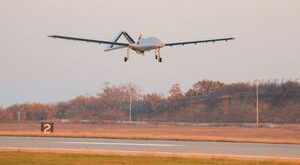On Friday, the government shutdown touched down at some of the country’s biggest airports. A shortage of air traffic controllers—many of whom were calling in sick after missing paychecks—triggered the delays of hundreds of flights in the Northeast. After New York’s LaGuardia halted incoming flights, citing “staffing shortages at FAA air traffic control centers,” the delays spread throughout the region.
A few hours later, President Trump took to the Rose Garden to announce a deal to reopen the federal government for the next three weeks, after the 35-day partial closure. The pain induced by the air traffic controller shortage, however, won’t vanish in an instant, or even the few days it takes the airline industry to recover from these delays. It will likely trouble US air travel for months—or years—to come.
First, the return of air traffic controllers’ paychecks won’t necessarily keep everyone on the job. Guiding planes through crowded airspace is a stressful job, and the worries that come with a 35-day government shutdown exacerbated that. Paul Rinaldi, president of the National Air Traffic Controllers Association, told CNN he has seen an uptick in routine errors as a result. (The NATCA is currently suing the government for not paying air traffic controllers during the shutdown.) Rinaldi also indicated this stress could push air traffic controllers to call it a career and move to Florida: Nearly a fifth of the 14,000-strong workforce is eligible for retirement. This is concerning because the shutdown also impacted the FAA’s training pipeline for new air traffic controllers.
To make things worse, that workforce was understaffed before December 22 (in 2016, the workforce hit a 27-year low), which is when President Trump and Congress began their month-long game of budgetary chicken. Fewer men and women in the control tower means more work for everyone else—and a better reason to retire when you can.
Now, add on the fact that the FAA’s training academy, in Oklahoma City, has already been shuttered a month. And, if prior shutdowns are any indication, the facility will need even more time to get all its recruits back into class. “In 2013, when the government shut down for two weeks, it took the FAA nearly six months to get the school back up to a normal level of training capabilities,” says Sharon LaRue, a professor of air traffic control at the University of Alaska in Anchorage. LaRue says her estimate comes from conversations with other instructors in the industry; the FAA did not immediately respond to request for comment on that time frame.
LaRue says the reason the school took so long to get moving again is because it’s staffed mostly by contractors, many of whom work part-time. When their jobs disappear, they tend to follow suit. So, when it’s time to restaff, you can’t replace them by popping an ad in the classifieds—this work requires a very specific skill set.
It’s possible the scatter effect was mitigated by the sudden arrival of this shutdown, since workers would have had less of a chance to look for other work. But even if every staff member sticks around, it’s possible students have dropped off in the past month. “The complex is surrounded by big apartment buildings that cater almost exclusively to people attending training,” LaRue says. “A lot of them have given up leases on apartments where they came from, and are now sitting in Oklahoma trying to come up with rent that they no longer get a per diem to pay for.”
Given the huge numbers of Americans who live paycheck to paycheck, it’s hard to imagine everyone enrolled could wait around for school to restart. Which means fewer potential replacements for an already diminished workforce, and fewer eyes on the skies. And when America’s aviation system has to choose between sacrificing safety and efficiency, it picks the latter. Which means more delays are likely—whether the government’s stays open beyond the new February 15 deadline or not.
 Unmanned Aerial Vehicle The latest drone news
Unmanned Aerial Vehicle The latest drone news





